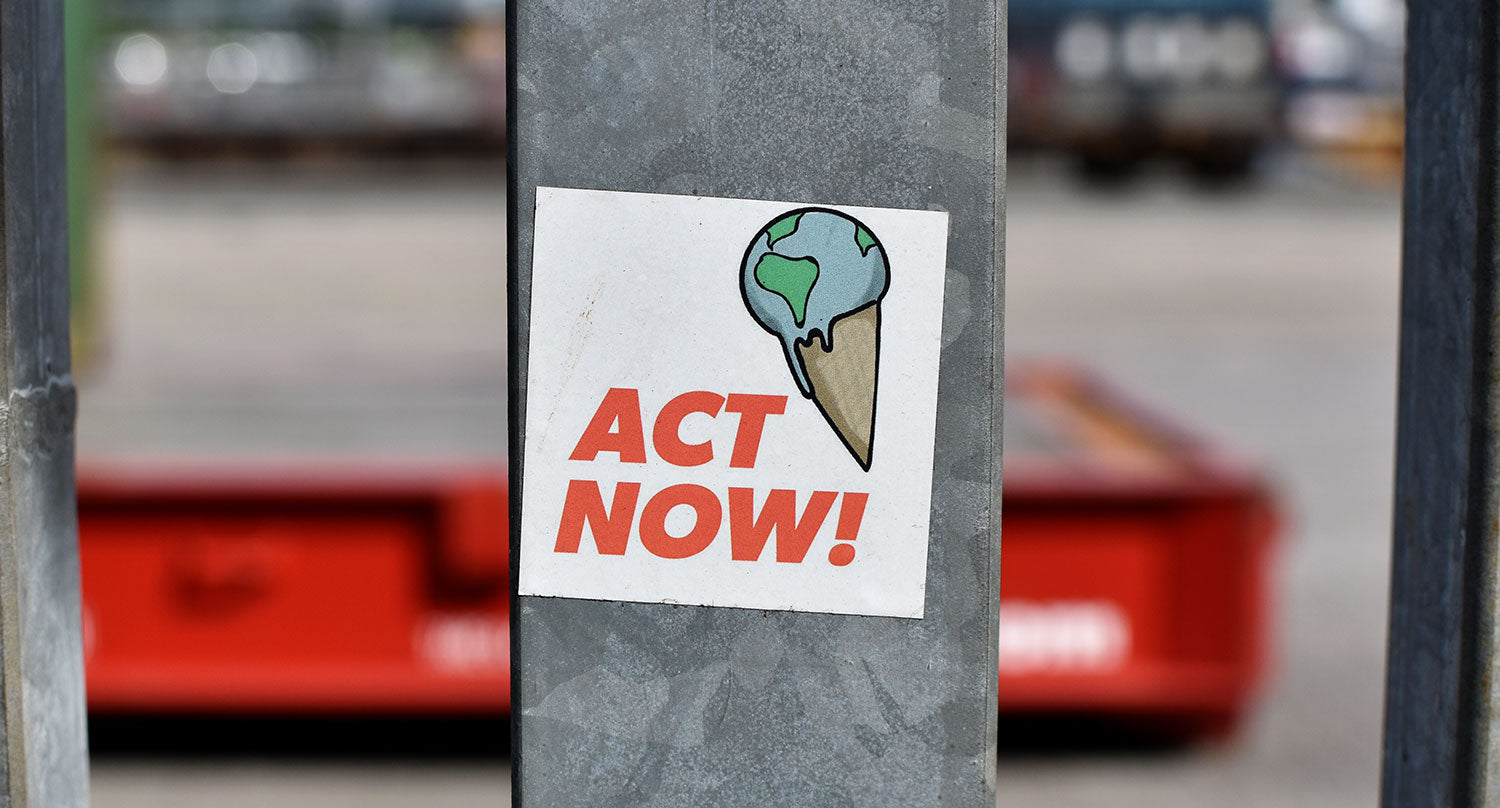Carbon neutrality is crucial to addressing the climate crisis. In this piece we shed some much needed light on what it means and ways of achieving it.
We all dream of a world where humanity lives harmoniously with nature. Our air and oceans are clean, our forests lush and full of life, and fruit trifle will be calorie free. If we’re going to achieve this paradise, we’re going to have to make the switch and become carbon neutral. Tackling the climate crisis makes sense from an environmental and economic perspective. This should not be disputed. We rely on a stable, healthy planet for so much. We need all businesses and organisations to act alongside individuals and countries.
Unfortunately, some research we undertook recently into Fortune 500 companies indicates that climate change still isn’t being considered nearly enough in these companies’ strategies. There are also those who talk a good talk, and perhaps even have good intentions, but undermine themselves through their actions.

In this piece, we are going to delve a little deeper into why this matters and what carbon neutrality really means. But let's begin with some basics figures.
Time's ticking - the imperative of carbon neutrality for a sustainable future
By now, we can see the impacts of the climate crisis appearing all around us. From record hot months to extreme events unfolding in nature across the globe. As you'll know, to prevent the situation from worsening it is critical that we limit the emission of more greenhouses gases, especially CO2, into the atmosphere. Experts have predicted that CO2 levels should be kept under a 440 parts per million (ppm) threshold in order to keep global warming under an acceptable 2C limit. In 2018 levels were at 407.4ppm. At current rates, it’s predicted we only have around 16 years until we exceed the carbon budget remaining to keep under 440ppm and the 2C limit. Not the most pleasant of facts to digest at a dinner party, but true nonetheless.
One of the things governments, companies and even individuals can do is to reduce their carbon emission and strive for carbon neutrality.
Carbon neutrality – what does that actually mean?
Carbon neutrality, or having net zero carbon footprint, is achieved when carbon emissions are balanced by carbon removal, or sequestration if you want to get fancy about it.
Try saying that sentence fast, six times in a row. Luckily you rarely have to, unless you are Greta Thunberg in the UN or at the World Economic Forum, pleading for companies and governments to wake up. But we digress.
To achieve neutrality on a global scale, all carbon emissions would have to be compensated by carbon removal. Quite a task, but achievable by first reducing carbon emissions to an absolute minimum and then offsetting them by utilising carbon sinks, such as forests, that absorb carbon from the atmosphere.

Achieving carbon neutrality (or even better, negativity)
We, as well as a few other organisations, countries, cities and even rock stars around the world, have pledged to operate on a carbon-neutral model.
It’s important to be completely open and transparent on this as it goes deeper than a mere marketing campaign or PR stunt. It is fundamental to how we operate as a business which is why we publish a carbon report that breaks down our carbon footprint and makes the data available for all to see.
For 2019 we did the sums and were happy to find that our net carbon emissions were actually negative. This means we can proudly share that we are a carbon-negative company!
We achieved this by taking measures to decrease carbon emissions from our processes, and then offset what we reluctantly emit using carbon offset programmes. This two-pronged approach is crucial, as it’s always better to decrease emissions upfront than offset them later.
What countries are carbon neutral?
When it comes to being champions of carbon neutrality, a few standout countries have taken the lead. Among them, Bhutan and Suriname go above and beyond by not only achieving carbon neutrality but actually becoming carbon negative — removing more carbon than they emit. Their incredible dedication to a sustainable future sets an inspiring example for the rest of the world.
But they're not alone in this journey. Uruguay has set an ambitious target to join the ranks of carbon-neutral nations by 2030. Their commitment to accelerating change places them at the forefront of the race.
In Europe, a group of countries is sprinting toward carbon neutrality. Sweden, Austria, Iceland, Germany, and Finland have all set their sights on achieving this feat by 2045 or even earlier. These nations have made sustainability a top priority, recognising the urgent need to transition to cleaner and greener practices.
With each country taking its own unique approach, these aspiring leaders demonstrate that carbon neutrality is not just a dream—it's a tangible reality within our grasp.

Offsetting and the power of trees
Our actions as a business inevitably emit carbon. We compensate for the carbon emitted through offsetting programmes such as tree planting. Trees, as well as providing a shady spot on a summer’s day, are excellent at capturing carbon.
On average, a mature tree can removes 21kg of CO2 per year. There is currently a campaign underway to plant around 1 trillion trees on suitable land globally, with the potential to absorb up to 200 billion tonnes of carbon.
There are other ways businesses can help too, such as donating a portion of profits to fund educational programmes that teach others about topics such as carbon neutrality. This is the aim of one of the projects supported by agood foundation.
However, some criticise offsetting as an easy way out and stress the importance of not emitting the carbon in the first place. In answer to the 1trillion trees project, there’s a counter-argument that states that whilst this is a worthy project, it could distract from other methods of fighting climate change, like switching to clean energy.
There’s also a body of research that looks into the efficacy of trees to continue to absorb carbon as global temperatures climb, and it takes years for trees to mature and offset the carbon humanity emits daily.

Prevention is better than cure
As the saying goes, prevention is better than cure and this is certainly the case with achieving carbon neutrality. Initiatives like transitioning to clean energy, saving water and avoiding terrible polluters such as deforestation, reduce the upfront cost of operations and negate the need for offset programmes.
From a preventative perspective, we as a company are dedicated to designing products made from sustainable materials using clean manufacturing techniques. We take measures like solely working with suppliers who meet our standards on key areas such as energy sources and water usage. Other areas we focus on are personal travel, for example holding meetings online and flying only when we really have to.
To truly succeed, carbon neutrality has to become part of your DNA, like a superpower we wish we all had. We realise that we’re not perfect, but by working hard to limit our carbon emissions early on, it reduces the need for offsetting programmes later down the line.
Being the best you - practical tips for reducing your carbon footprint
The race to decarbonise the world is a marathon not a sprint- a process of constant reevaluation, reinvention and fine-tuning. There is hope, and as a business we’ll keep working to improve our processes using the methods available to use.
As it’s a team effort, here are some tools and tips for lowering your personal carbon footprint:
Change your search engine
One simple change you can make is to switch your search engine to Ecosia. With Ecosia, every search you make contributes to planting trees. It may seem small, but 45 searches add up to planting one tree, making a tangible difference for the environment.
Eat less meat
Another significant action you can take is to eat less meat. In fact, reducing your consumption of meat or eliminating it from your diet entirely is one of the most effective ways to combat climate change. Livestock production is a significant contributor to greenhouse gas emissions, so making conscious choices about your diet can have a profound impact.

Don’t buy fast fashion products
The fast fashion industry produces an enormous amount of CO2 emissions and contributes to other environmental issues. Instead, try alternatives like circular fashion, repurpose your old clothes, choose locally handmade garments, buy vintage items, or participate in clothing swaps with family and friends. These choices not only reduce your carbon footprint but also promote a more sustainable and ethical fashion industry.
Stop buying plastic water bottles
Plastic pollution is a pressing environmental issue, particularly when it comes to single-use plastic water bottles. By avoiding the purchase of plastic water bottles and opting for tap water or filtering your own water, you can significantly reduce plastic waste. Not only will this help protect our precious oceans, but it will also save you money in the long run.


When you travel, climate compensate
Here's a scary quote from the World Resources Institute:
"Emissions from the transport sector are a major contributor to climate change — about 14% of annual emissions (including non-CO2 gases) and around a quarter of CO2 emissions from burning fossil fuels.
Even more concerning: At a time when global emissions need to be going down, transport emissions are on the rise, with improvements in vehicle efficiency more than offset by greater overall volume of travel."
When you travel, consider climate compensation and offset your impact. There are handy tools available that can help you calculate your carbon emissions and find ways to offset them. And remember, even for shorter car trips, it's important to compensate for the emissions generated.
Keep track of your emissions
This is a valuable way to stay aware of your environmental impact. The United Nations has developed a great tool that allows you to easily calculate the environmental footprint of you and your family based on your behaviour. By using such tools, you can identify areas where you can make improvements and make more informed choices moving forward.
Conserve water
Conserving water not only helps preserve this precious resource but also reduces the energy required for water treatment and transportation. Install low-flow showerheads and faucets, fix leaks promptly, and water your plants during cooler hours to minimise evaporation.
Reduce, reuse, recycle
Reduce your consumption by opting for long-lasting, eco-friendly products, wave goodbye to pesky single-use plastics, and embark on thrifty adventures with secondhand treasures. Get ready to unleash your creativity as you breathe new life into everyday items through the art of upcycling. Remember, upcycling is all about finding innovative ways to repurpose discarded pieces.

Turn old furniture into stylish pieces with a fresh coat of paint or repurpose wine bottles into unique home decor. Explore our blog about 12 inspiring upcycling projects, and you will see - the possibilities are endless. You'll not only reduce waste but also infuse your life with a sense of creativity and individuality. And don't forget to channel your inner recycling superhero, rescuing materials like paper, glass, and plastic from their landfill fate.
"Being the best you" means taking responsibility for your actions and striving to make positive changes. By implementing these tools and tips to lower your carbon footprint, you can contribute to the global efforts to decarbonise our world and create a more sustainable future for generations to come.
For further reading, here are our top ten ways to reduce your carbon footprint based on the latest research.
In short
Embracing carbon neutrality is not just a responsibility; it is an opportunity for positive change. By taking simple steps towards reducing and offsetting our carbon emissions, we can collectively pave the way for a greener, more sustainable future. Each of us has the power to make a difference, whether through conscious choices in our daily lives or advocating for systemic changes.
Let's walk hand in hand on this journey, as compassionate and empowered individuals, to build a world where carbon neutrality is the new norm. Together, we can create a planet that thrives, preserving its beauty and resources. Remember, the path to carbon neutrality begins with a single step, and the time to act is now.

~
If you want to know more about our carbon negative status, our annual carbon report or just want to give us some feedback – reach out to Emilia Cullborg at ec@agood.com.





























